Aside from its beautiful blooms, most gardeners incorporate the herb clematis in their yard or garden because of its medical benefits. Joint pain, varicose veins, headaches, and gout are just some of what it can alleviate. So, to get the most out of your clematis, you should know how to keep it blooming. But no worries! We have already found the answers for you.
You can keep clematis' blooms coming if you take care of it properly. Continuous blooms are as easy as using the correct soil, feeding adequate fertilizer, and deadheading, to make your clematis produce flowers.
Like any other plant, you should also follow the growing requirements of clematis if you want to make it superb and flowering most of the time. So, we suggest you keep reading to learn how to take care of your clematis properly. Let's delve into the details!
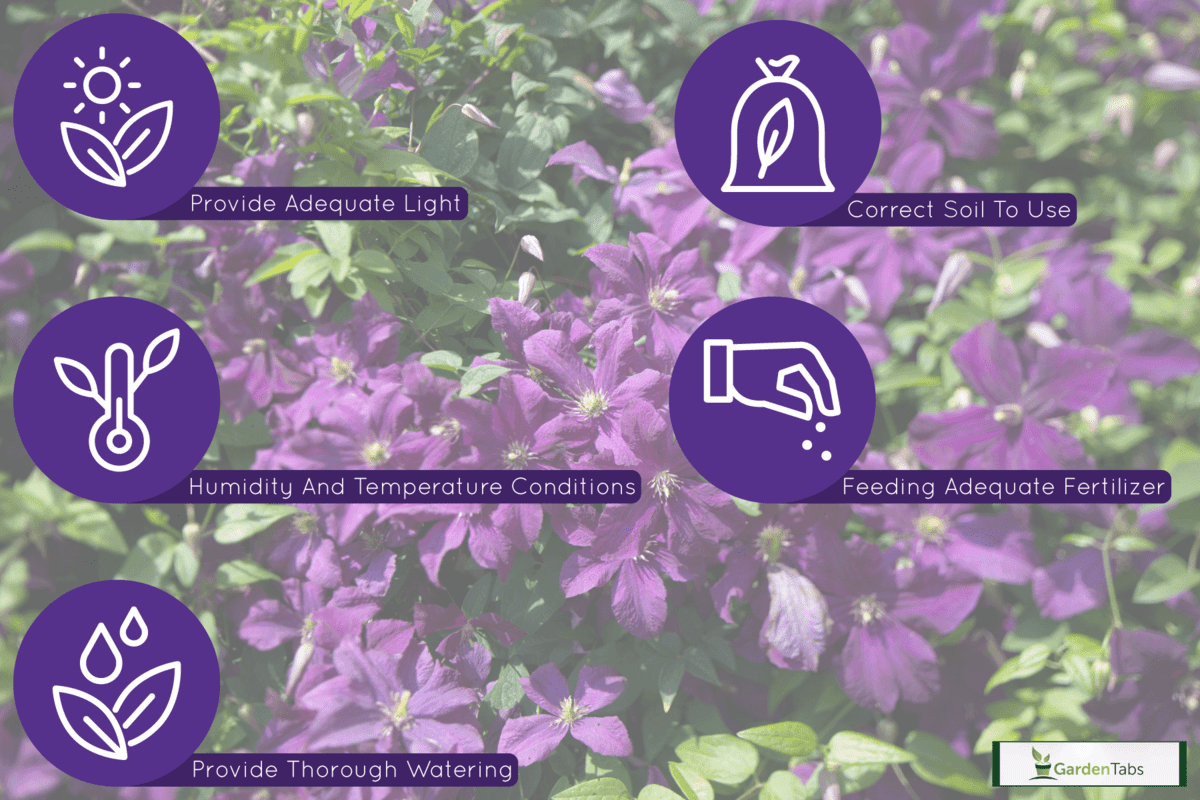
How To Maintain And Maximize Clematis Blooms
Several people may not know this, but clematis plants will grow best if you plant them in cool soil. You should also ensure the location is in the shade. And while you can keep the roots cool, you can allow the foliage to bask in the sun.
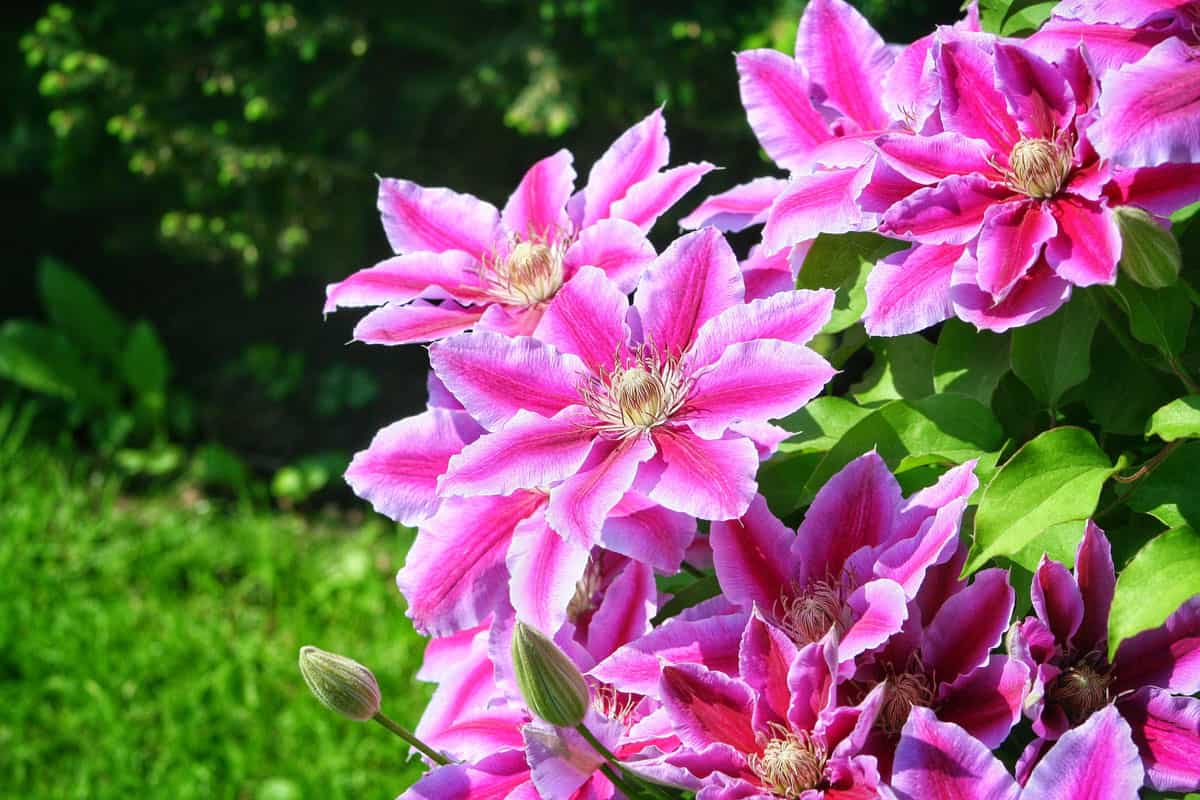
If you want to encourage more flower production from your clematis and make the blooming last longer, it would be best to use a 5-10-10 bloom enhancer. This fertilizer has low nitrogen content. And depending on what cultivar you planted, you can do it again every four to six weeks.
Furthermore, remember that some of your hybrids can have their second blooming season if you deadhead them. So, if you did such a thing, expect fresh blooms 30 to 45 days later.
Check out this 5-10-10 bloom enhancer on Amazon.
How To Properly Care For Clematis
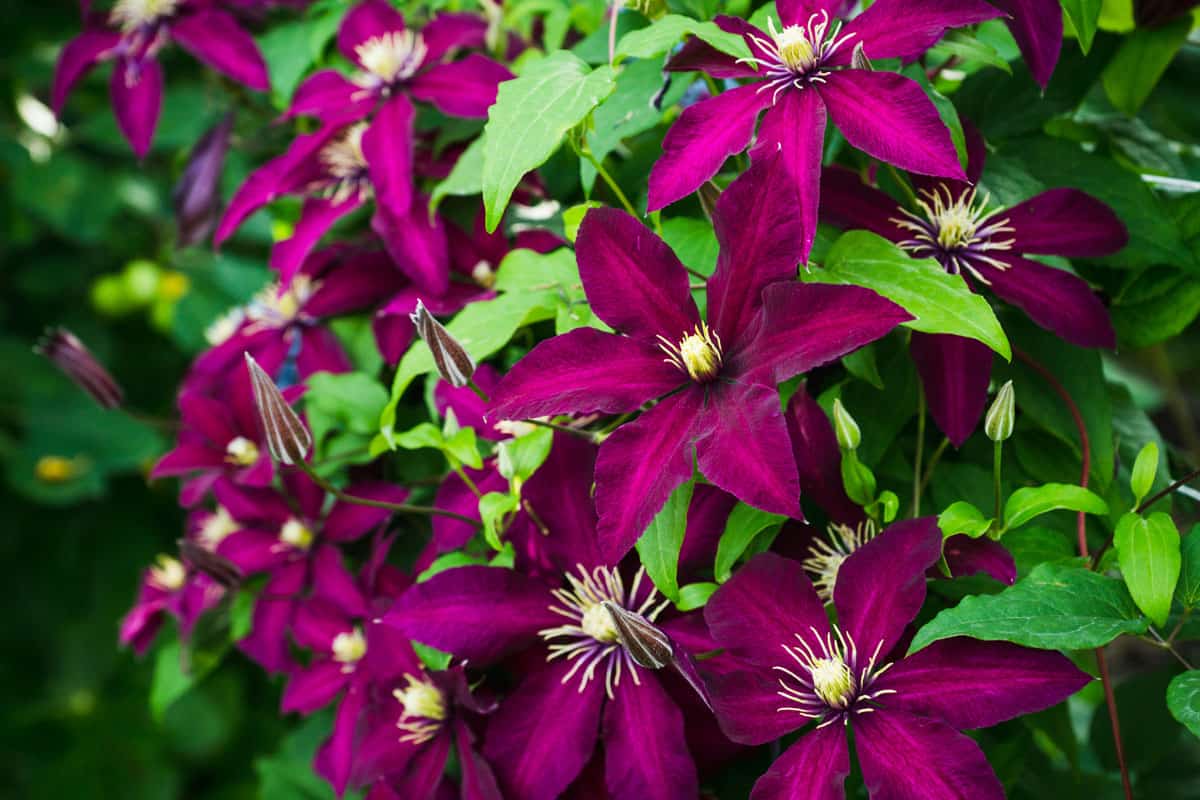
If you wish your clematis to grow healthy and produce a lot of flowers, it would be best to pay attention to our tips below:
Provide Adequate Light
Your clematis plants will flourish if you can provide them with adequate sunlight. Expect them to have pretty blossoms if they get sunlight for at least half a day. Additionally, a bright, filtered light will also do the trick.
However, you should only let the leaves and flowers receive sunlight. It would be best to let the lower part, especially the roots, be in a shady space.
If you are in a location where the hot climate is superior, you can grow your clematis in an area with partial shade. On the other hand, if you live in a colder climate, we suggest you follow what we mentioned earlier.
Humidity And Temperature Conditions
This common perennial herb thrives in various environments, including the continental United States, where it regrows each spring and summer. And one fascinating thing is it can also come back during frost.
Provide Thorough Watering
Thoroughly watering your clematis plant is a must. It is because its root system is too deep. Also, it is another way to keep its roots and soil cool, which is a number one requirement for your clematis.
In addition, we highly suggest watering it frequently, particularly if you notice that the weather conditions are too dry.
Correct Soil To Use
We highly suggest planting your clematis plant in compost-amended, well-drained loam.
Feeding Adequate Fertilizer
Using fertilizer for your clematis plant is important. It is one of the essential things you can provide. However, you must utilize the fertilizer correctly.
Your clematis needs the first application of low-nitrogen fertilizer in the spring. But before you do it, check the buds and see that it is about 2". You will know by then that it is the ideal time to feed it with fertilizer.
After that, feed your clematis alternately with a balanced fertilizer. We suggest doing it until the end of the growing period.
What Diseases Affect Clematis
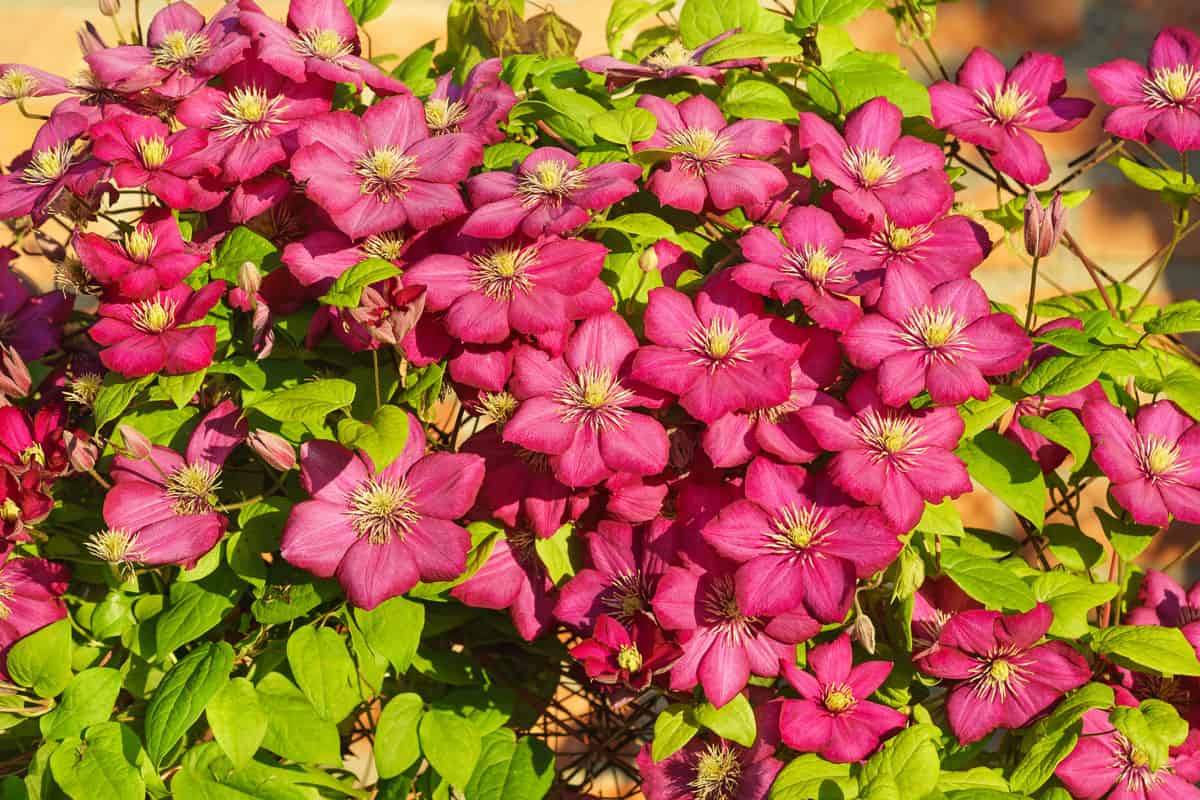
Clematis wilt is the most typical problem associated with clematis maintenance. We know clematis produces lots of blooms, but that is the problem. If it doesn't have support, it can lead to a broken stem, and that is where fungi will take action to infect the wounded areas.
You must be careful about it, especially with the young clematis plants. And if you notice some wilting parts, it would be best to get rid of them to avoid infecting the other healthy parts. The fungus can survive in seemingly healthy parts of the plant, so trim an additional inch away from the infected spots.
What Pests Affect Clematis
Two main stubborn pests always feed on clematis: earwigs and slugs.
Earwigs typically appear during midsummer, destroying late-blooming clematis in a single night. On the other hand, slugs begin attaching to the plants when spring arrives. And they mainly feed on new clematis shoots.
Create a spray from various herbs and vegetables to prevent these persistent pests naturally.
How To Grow Clematis
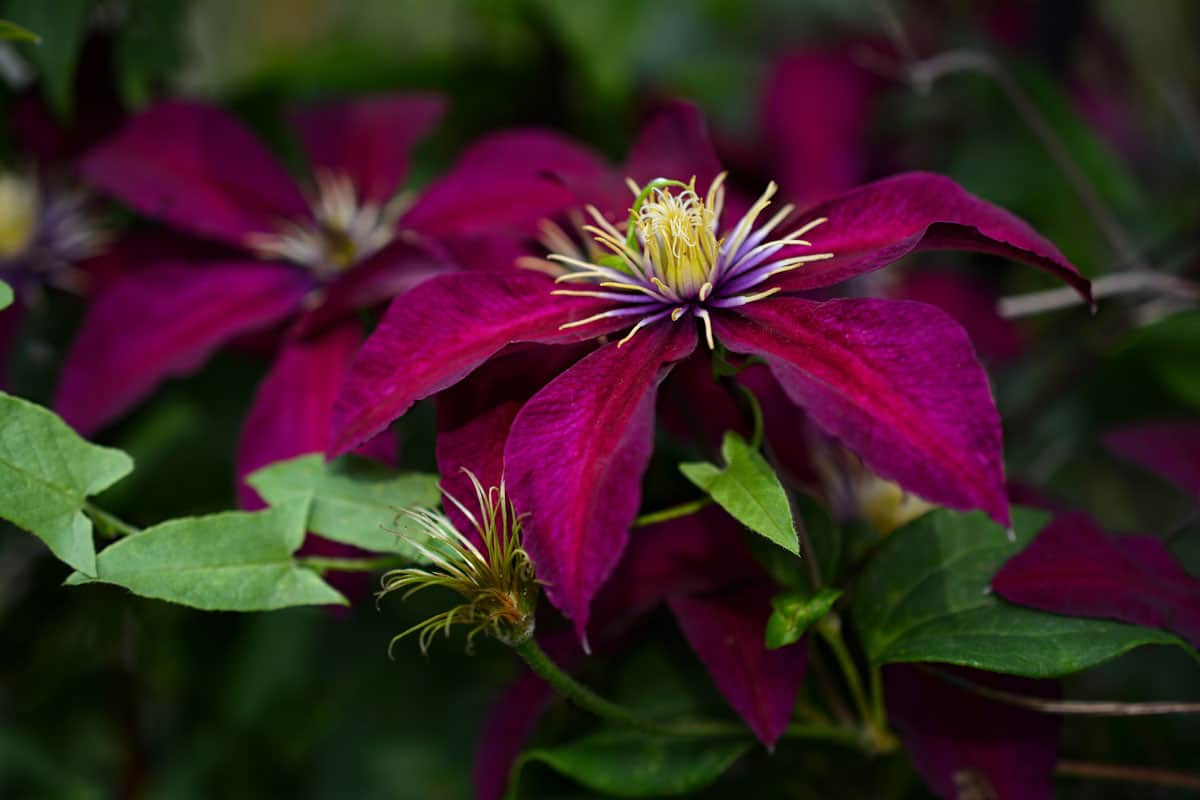
You should always verify the clematis plant you intend to buy by tipping it out of its pot to ensure that it has no unwanted visitors. Doing such a thing will also help you identify if it has a good supply of white roots.
Unless these conditions are met, you should select a different plant. Generally, you should not bring in any damaged or otherwise subpar plants when you start your garden.
As you can notice, clematis is only available in taller pots. And it is beneficial to bury them with their top crown between 3" and 4" in the soil. Because otherwise, you can increase the possibility of clematis wilting.
Where Is The Ideal Place To Plant Clematis
Clematis thrives surrounded by other plants. Your clematis plants can take pleasure in the refreshing effects of cool soil and the sun's warmth with other herbs and vines.
You must know that they have a far better chance of blooming if you will not isolate or shut them off.
During winter, you can mix your clematis with another plant to find warmth and protect each other from the drying effects of winds. A highly recommended companion plant is the osmanthus.
Additionally, you can also incorporate honeysuckle, wisteria, and rambler rose to let your clematis socialize and enjoy its growth.
It's OK to grow clematis next to a wooden fence, as the plant's roots are flexible enough to twist and turn around the posts. However, if the fence is treated, it would be best not to bury the roots immediately since water runoff can contaminate it.
When Is The Perfect Time To Plant Clematis
You can plant your clematis herb anytime, as long as you have prepared the area. Clematis plants use the summer and fall seasons to bulk up their root systems in preparation for spring's top and flower expansion.
To start planting, excavate a hole up to three times the width of the root balls of your clematis. After that, fill the bottom with thick compost. And before you put your clematis, it would be best to incorporate topsoil to cover the compost. Once you finish, you may now plant the clematis.
Furthermore, we highly suggest adding support to your freshly planted clematis. And since clematis prefers to have its roots adequately cool, it would be best if you incorporate stones or a light winter mulch around their bottom.
Additionally, purchasing a ground thermometer would help if you want to keep an eye on your plants.
Check out this ground thermometer on Amazon.
And for the most outstanding results, combine two blooming shrub varieties: one that blooms early and one that blooms late.
How To Plant Clematis In Container
Growing clematis in containers or pots is possible if you can provide a pot with a measurement of at least 18" in width, length, and depth. Additionally, we suggest you should not use a container that produces heat.
To get the best results, use potting soil rich in peat moss. Using peat moss will help your clematis keep its moisture while receiving adequate drainage.
And as we mentioned earlier, clematis requires support. You can prop the plant inside the container with bamboo pegs or lean it against a trellis or wall.
How To Properly Prune Clematis

You should not take the pruning process of clematis too lightly. When spring comes around, it's time to cut back the branches to just above a set of healthy buds. You can then manipulate the plant's size and form through selective cutting.
If your clematis plant has been living for over four years, expect to produce progressively fewer flowers over time. Regular springtime pruning of older stems can promote compact bloom growth. Do not hesitate to prune away any dead stems or otherwise unhealthy ones.
Wrapping Things Up!
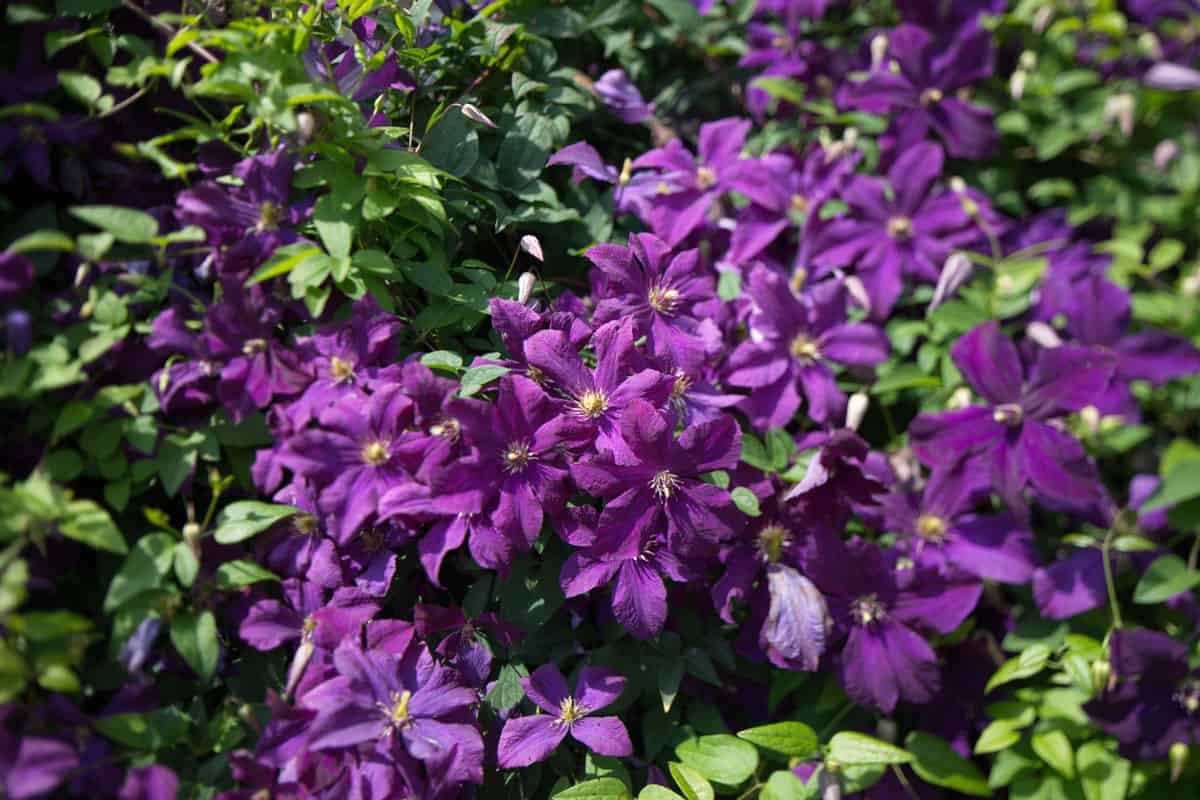
With patience and persistence, you can keep your clematis plant blooming. Also, you need to follow the correct way of taking care of them, provide them with what they need based on the growth requirements we discussed in this article and expect a healthy and happily blooming clematis!
We are glad you finished this article, and we hope this answers all your questions about clematis. If you want to read further, you may check the posts below or visit our website and find others that might interest you.
10 Ground Cover Plants That Bloom All Summer
What Kind Of Fertilizer Helps Flowers Bloom? [7 Concrete Suggestions]


